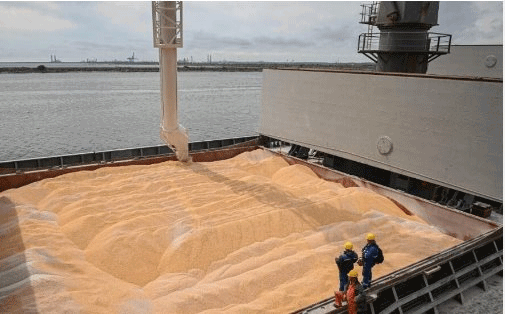According to the General Department of Vietnam Customs, over 288,000 tons of wheat were imported in June 2024 alone, valued at more than USD 81 million. This represents a sharp 46% decrease in volume and a 42% reduction in value compared to the same period last year. Despite this monthly decline, the overall trend for the first half of 2024 shows a different picture.
From January to June 2024, Vietnam imported over 3.1 million tons of wheat, costing more than USD 862 million. This marks a 26% increase in volume, although the total value decreased by 3% compared to the first half of 2023. The average import price stood at USD 276 per ton, a significant 23.3% drop, reflecting the global price fluctuations and competitive sourcing strategies.
Key Players in Vietnam’s Wheat Market
Brazil continues to be the largest supplier of wheat to Vietnam, holding a 37% market share. In the first six months of 2024, Vietnam imported 1.15 million tons of wheat from Brazil, valued at USD 287 million. This represents an astonishing 339.8% increase in volume and a 200% rise in value compared to the same period last year. The sharp increase in imports from Brazil indicates the country’s growing role in meeting Vietnam’s wheat demands, potentially as a response to the shifting dynamics in the global wheat market.
Australia, traditionally a significant supplier, saw a steep decline, with wheat imports dropping by 64% in volume and 68% in value compared to last year. Despite holding a 21% share, Australia’s contribution is waning, likely due to climate challenges and competitive pressures from other wheat-exporting nations.
However, the most striking development comes from Ukraine. In the first half of 2024, Vietnam imported 545,052 tons of wheat from Ukraine, worth over USD 141 million. This represents a staggering 901.9% increase in volume and a 681.2% rise in value year-on-year. Ukrainian wheat, priced at an average of USD 259 per ton, is currently the most cost-effective option for Vietnam, highlighting the country’s strategic importance despite ongoing conflicts.
Ukraine’s Role in the Global Wheat Market
Ukraine, known as the “breadbasket of Europe,” has historically been a major player in the global wheat market. Before the Russia-Ukraine conflict, Ukraine was the fifth-largest wheat exporter globally, contributing about 10% of the world’s wheat supply. Additionally, Ukraine is a top exporter of barley, corn, rapeseed oil, and the largest exporter of sunflower oil, holding a 46% share of the global market.
Despite the ongoing conflict, Ukraine’s grain exports are showing resilience. For the 2023-2024 season (July 2023 to June 2024), Ukraine’s grain exports have risen to 2.56 million tons, up from 2 million tons in the previous year. This includes 1.27 million tons of corn, 977,000 tons of wheat, and 329,000 tons of barley, according to Ukraine’s Ministry of Agriculture. This upward trend is likely to continue as Ukraine seeks to maintain its position in the global grain market, leveraging its vast agricultural capacity.
Vietnam’s Agricultural Challenge: Dependency on Imports
Vietnam’s reliance on wheat imports is a critical issue, given the country’s limited capacity to produce wheat domestically due to unsuitable climatic conditions. Consequently, Vietnam spends billions of dollars annually on wheat imports, exposing the country to global market volatility. The International Grains Council (IGC) has forecasted a 2.4% decrease in global wheat production for the 2023-2024 season, driven by lower outputs in Russia and the United States due to weather-related challenges. This reduction in global supply is likely to push wheat prices higher, adding further strain to Vietnam’s food import bill.
The dramatic increase in wheat imports from Ukraine underscores the volatile nature of global agricultural markets and the challenges faced by import-dependent countries like Vietnam. As global wheat supplies tighten and prices rise, Vietnamese importers must adopt strategic planning and risk management approaches to secure stable wheat supplies. This includes early procurement for the year-end period and exploring hedging options on commodity exchanges to mitigate price risks.
Error




